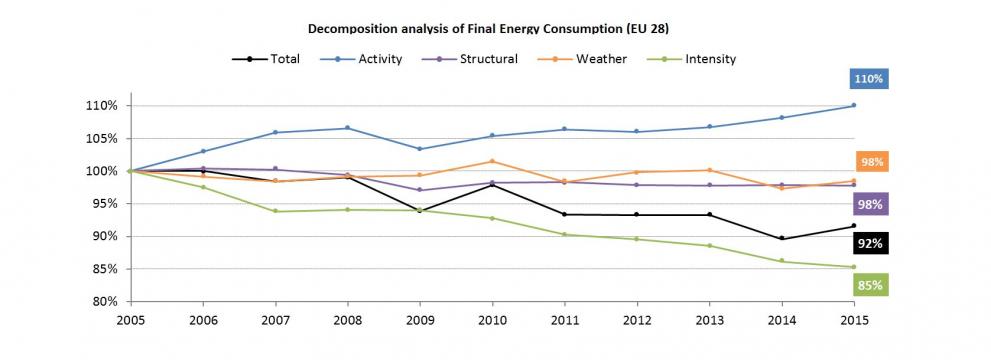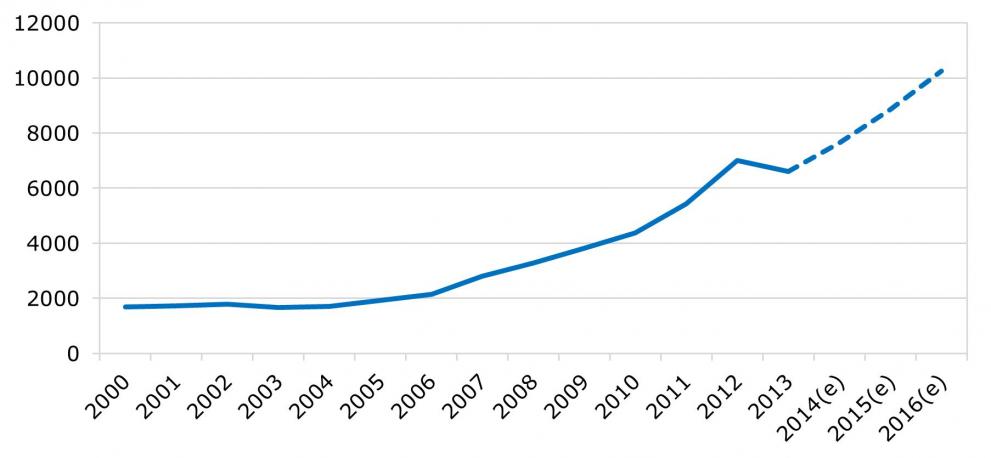
The EU remains on track to implement the Energy Union strategy for secure, affordable and climate-friendly energy, with significant developments across several policy areas - including research and development, renewables and energy efficiency.
The latest progress is detailed in the European Commission's 3rd State of the Energy Union report, presented today and drafted with the support of the JRC.
The report calls for concerted action to ensure the completion of the Energy Union before the end of this Commission's mandate in 2019.
The JRC's scientific input formed the basis for key observations made in the report. Some highlights include:
- By 2020, cities in Europe could contribute nearly a third of the EU's entire greenhouse gas emissions savings;
- Improvements in energy intensity have driven a decrease in energy consumption;
- The JRC's scientific analysis has helped to assess the value of key infrastructure projects included in the 3rd list of Projects of Common Interest.
These inputs provide an accurate picture of where the EU stands in areas such as meeting energy efficiency targets, harnessing the potential of cities to drive energy transformation and ensuring the EU's clean energy competiveness through research and innovation.
Ensuring cities are equipped to play their vital role
While climate change remains a global issue, cities are where much of the innovation and investment for the energy transition occur.
The JRC provides scientific, methodological and technical support to the Covenant of Mayors initiative, which brings together thousands of local and regional authorities for concerted climate and energy action.
The JRC's 'Covenant of Mayors in figures: 8-year assessment' report gives an idea of how important cities are in this endeavour: by 2020, greenhouse gas emission reductions of covenant signatories could represent 31 % of the EU's entire target.
The JRC's study is included within the accompanying documents to the state of the Energy Union report.
The study also analyses the wider progress of cities towards their sustainable energy action plans, which include ambitious plans such as reducing energy consumption by 20 % in 2020 compared to baseline years and increasing local energy production from 10% in baseline years to 19% in 2020.
The JRC's analysis is encouraging: the first results on the implementation phase of 315 action plans show that 65 % of the actions are completed or ongoing. The majority of the completed and ongoing actions are in the transport sector (93 %) followed by municipal buildings and facilities (83 %) - where the municipality itself demonstrates leadership and commitment.
Keeping energy efficiency on track by understanding the drivers
The first of a series of annual JRC reports aimed at tracking real progress towards Europe's energy efficiency targets, 'Assessing the progress towards the EU energy efficiency targets using index decomposition analysis' can also be found in the accompanying documents to the state of the Energy Union report.
In order to understand progress towards the 2020 energy efficiency targets, this study looks beyond effective energy efficiency policies to other factors that drive energy consumption, such as economic activity, structural changes in the economy towards less energy intensive sectors, the demography of the people living in the EU and the weather.
The results showed that energy intensity improvements generally played a dominant role in falling energy consumption during the study period:
- As the EU's economy continues to grow, higher economic activity would have led to an increase in primary and final energy consumption of around 10% compared to 2005. However, the encouraging intensity effects offset this and have driven an overall drop in energy consumption;
- The study's annual results confirm the impact of the economic recession on consumption trends in 2009 and to a lesser extent in 2012;
- Structural changes in the economy have had a smaller role in driving down energy consumption, accounting for a final energy drop of 2% compared to 2005 consumption levels;
- Weather and demography have had a very small impact on the overall consumption.

Both aggregated and sectoral analysis in primary energy consumption (the total energy demand of the country including transformation and distribution losses) and in final energy consumption (the total energy consumed by end users) at EU and Member State levels were carried out, covering the period 2005–2015.
Research and innovation for a competitive EU
The Energy Union is a major driver of clean energy innovation in Europe and the rest of the world. The JRC assesses the progress of Member States as they seek to ensure European companies and innovators are at the forefront of this.
In assessing the progress of each Member State over the last years, the JRC looked at:
- Public and private investments in energy research and development;
- Innovative patents created;
- Research and innovation funding priorities and key patenting areas for each Member State.
The outcome of each assessment forms a dedicated chapter in the country fact sheets that are annexed to the state of the Energy Union report.

The findings will also form the basis for the formulation of recommendations regarding the implementation of the 5th dimension of the Energy Union - research, innovation and competitiveness - in each Member State.
Future-proof infrastructure for the energy transition
There will be no energy transition if the infrastructure is not adapted to the needs of the future energy system.
This year, the JRC's input has been instrumental in helping to identify and evaluate projects of common interest in the European energy infrastructure - notably in the categories of electricity, natural gas, and smart grids.
Scientists assessed the contribution of each proposed project to the EU's policy objectives of market integration, sustainability and security of supply.
The work by JRC was conducted in close collaboration with regional energy infrastructure working groups and with representatives of all EU member states.
It is expected that this support work by will continue in the coming years, due to the JRC's independence from industrial and Member State interests, and the technical capacity for carrying out complex and numerous techno-economic assessments.
Related Content
Accompanying documents including the JRC Science for Policy reporst
State of the Energy Union - the year of engagement (Press Release)
Details
- Publication date
- 24 November 2017
